Academic Research Archive System Of ABC Company Capstone Project Document
Introduction
Technology brought a complete to radical change in a way people experienced the world and how they live their lives. It affects the increase of access information and services that has accompanied the advancement of the internet in our society. ( Ramey, 2012)
ABC Company research project is stored in the library using the manual process which makes researcher’s waste their time in finding the book they want. As days go by one of the disadvantages of increasing numbers of Researchers today is having a manual process of compiling research books inside the library and the misplacement of it gives a hard time to a researcher to find the academic research they are wanted. Human error also causes the misarrangement of the projects in a wrong place.
As a proponent, we will develop an Academic Research Archive System(ARAS) to help the future researcher’s and student’s of Carlos Hilado Memorial State Collage to easily find and get some information towards the different research project from the postgraduate students of the different organizations and help them to minimize the accuracy of time in scanning the documents.
Background of the study
ABC Company is a tertiary level institution that has four (4) campuses around Negros Occidental which aims to provide higher technological, and professional training in science, business, management, education, technology, agriculture and industrial fields.
The proponents conducted a study about the manual process of compiling a hardcopy of all research project in the library. The college uses manual process in terms of storing the research project of all respective courses. Most problem encountered by the librarian and the researcher’s nowadays is searching the book they wanted in the bookshelves of the library but they can’t find it easily and it wasting their time in finding. So the proponents developed a system that will easily compile all the research project in one system. It will be beneficial for the future researchers to fasten get the research document that will help them get some information and lead their Research to success.
The Academic Research Archive System is a web based system that aims to centralize library storage of research project at ABC Company Campus which can be used to store and archive research projects from the library. The researcher decided to develop a system due to the difficulties in disseminating the hardcopy of all research projects.
Statement of the Objective
The main objective of the project is to help the students, librarian, and future researchers’ in storing and archiving the different approved researches specifically it aims to:
- Develop an Academic Research Archive System for ABC Company Campus which will be capable of :
- Storing and compiling all academic research project of a different departments.
- Reduce the amount of physical space used to store documents, such as file cabinets, boxes and shelving.
- Provide easy access of information such as the title and researcher’s name.
- To evaluate the acceptability of the system using the adopted survey instrument based on ISO/IEC 25010 in the terms of Functional Sustainability ,Efficiency, Performance Efficiency, Compatibility, Usability, Reliability, Security, Maintainability and Portablility.
Conceptual Framework
The present study was patterned in an input, process and output framework. This study intended to develop an online compiling of all academic research in ABC Company (ABC COMPANY).
Scope and limitation of the Study
The Academic Research Archive System is focuses on the storing and archiving of all academic research project. This system will help the students’ to have resources in academis research of the students of ABC Company campus. The proposed Academic Research Archive System covers the processes in the ABC Company Library in searching the academis research of different desipline from students’ and adding academic project in the future.
- Easy to use and manage.
- Stores all the records of the thesis.
- Generates lesser time in scanning their project.
Scope
The scope of this capstone project is to store the academic research project information that has been done by final year and graduate students of different respective courses. The system focuses only on how the research information should be managed by a librarian who is also responsible for compiling the projects.
The librarian can be a coordinator of a selected staff in the library. He/she must responsible to approve the uploaded thesis project or any related files that has meet a requirement with students’. Aer that, the thesis and any related file can be viewed by the students of ABC Company.
limitation
The study is limited only in the storage of the academic research project in one system. It can give whole information for the researchers’ but need to access in the admins’ permission.
Significance of the Study
This study is essential to the following group of people and institutions through the help of its process, content and findings. Statements below shows how it specifically benefit them.
This study is beneficial to the following :
- Future Researcher. This system will provide a basis to future researchers who may experience related system.
- Institution. This system will help the institution for accreditation.
- Librarian. This system will provide a compilation of all the thesis and capstone project.
- Students. This system was developed in order to help the student for the retrieval of researchers for the references.
- Teachers. The results of the study will help lessen the burden in searching a capstone project.
Definition of Terms
Researcher. Conceptually, A person with the necessary experience, education, qualifications, skills and training to carry out research in their specific field or area of expertise.(MC Harmonious, 2016)
Operationally, The one who performs the research project.
Archiving. A place where public records or other historical documents are kept.(Noah Shachtman, 2014)
Operationally, This study helps documents of research project kept or store in one system.
Recording. To set down in writing or the like, as for the purpose of preserving evidence.( Houghton Mifflin, 2002)
Operationally. Record all the research document.
Review Of Related Literature
This chapter presents the review of related literature and studies which are relevant to the present study.
Local Related Studies
Online Document Management System
With storage prices falling and capacity ever increasing, the problem of how or where to store files and documents have pretty much
been solved for normal users. Indeed, with the increasing number of files a user stores, the main problem now is the efficient and effective
management of files the user has. By”management”, this refers to a system which enables easy access,organization and retrieval of files the user keeps, and the ability to perform certain functionalities automatically. The authors aim to build a prototype of such a document management system,ThesisFS. ThesisFS will present all the basic functionalities of a web-based file system, and will have additional
document management features such as intelligent document searching called Search Folders, automated indexing and tagging called Smart
Indexing, and automated user-defined actions called Action Folders. (Joseph Christian G. Noel, 2019)
Online Thesis Archiving System for University of Makati
The study aimed to develop Online Thesis Archiving System for UMAK that would help the students,faculty or whoever are in need to easily access theses. Users can access the system even if they are off of the school since it is an online system.Users will register by filling up the registration form. Upon registering the system will send email verification to the user for security purposes. The system has the features of searching, previewing of full theses and abstract, users can also download thesis. The searching has filter by title, author, subject matter, year submitted, and program title. Users will be able to know what the most viewed thesis is.They can also save a particular thesis offline by adding it on their profile. The system will be managed by the admin which is the librarian. Admin can update, delete, and upload thesis. The system has the dashboard which displays the numbers of users registered, number of thesis per college, number of views per thesis and number of abstract viewed.The project requires Sublime Text 3 for the front-end tool using PHP, HTML, CSS, JavaScript while for the back-end tool are the XAMPP and MySQL. XAMPP is use only as a development tool, to allow website designers and programmers to test their work on their own computers without any access to the Internet. MS Office 2016 is required in Soware for documentation purposes. Adobe Photoshop is use for editing pictures that will be used for the system. Domain is will be used for maintaining the website since it is an Online System. The researcher used CamScanner for scanning the documents. Aer capturing sample hardcopy of thesis the researcher import the picture in CamScanner and edit, aer editing the pictures it will be saved as PDF form. This will be saved in the database of the system.CamScanner helps the researchers to be digitalized the theses that are in the library. The System need a browser since it is an online system. Google Chrome is the browser that the researcher used.( Aljane Gilles, 2019).
National Archives of the Philippines
Public records contain information which allows government programs to function, provide officials with a basis for making decisions and ensure continuity with past operations. They document the legal responsibility of government, protect the rights of citizens and provide citizens with a means of monitoring government programs and measuring the performance of public officials. Records of government offices, whether local or national, GOCCs and GFIs also reflect the historical development of the government and of the citizens which it serves. Such records need to be systematically managed to ensure preservation of historically valuable materials, to provide ready access to vital information and to promote the efficient and economical operation of government.
Foreign Related Studies
Thesis Project Archive System (T-PAS) University Malaysia Pahang
Thesis is the report should be made by final year students in the Faculty of Computer Systems & Soware Engineering (FSKKP), University Malaysia Pahang. There are two types of thesis report namely research and technical. Each thesis report must be bound kept in the thesis room. The thesis then will use as a general reference thesis for FSKKP’s students. However, there are constraints in terms of the arrangement and search methods to find each thesis reports stored in the room. This will make it difficult for students to find topics that they wish to use a reference. There is also has time constraint problems faced by students and difficult for them to go into the room at every times. Safety of each thesis report also cannot be guaranteed because there is no method that can ensure the printed report or thesis project was included in the compact disc can hold out against damage or the. Therefore, Thesis Project Archive System (TPASS) was developed to help students more easily to find their desired report. Students can enter the system at every time. In addition, the safety report is also more secure as more systematic management methods in the T-PAS can create data integrity in it. To create a complete system, T-PAS will be developed using the Waterfall System Development Life Cycle (SDLC). PHP programming language and MySQL has been chosen as the need to develop this system. By using storage approach using database system, it will prove to be helpful to manage the report thesis in FSKKP for their students more effectively (Shahrul Nazmi, Ismail (2013) )
Malaysian Thesis Online (MyTO) of University Putra Malaysia
Malaysian Thesis Online (MyTO) is a thesis system used by University Putra Malaysia (UPM). The system offered to all users from inside and outside university to search thesis their wanted. Only admin can logon to the system, the other user only has abilities to search thesis. The additional function offered from this system is allowed user the search thesis from other university. This function only gives a link to other university and not officially include from MyTO database. For the thesis document, it only limit for abstract view only, not all section of the thesis has a permission to view it.( SULTAN ABDUL SAMAD, 2019)
Educators Archiving System in the Namibia’s Education Context
The educators archiving system is a soware application that will be instantiated to encapsulate directories, folders and documents. It is aimed to replace the existing manual format of storing documents in the education system by educators. Such that the administrative work done by teachers as well as other educators is reduced to facilitate the teaching process. The educators archiving system will enable an electronic technique of keeping backups of the work done in previous years without consummating a physical scape. Educators are allowed to re-use contents from the previous years and a minor editing might be required to keep the documents up to current processes. In the existing method of administration, physical files are used to keep documents. The manual process take up physical space and the data cannot be kept current to save time. Therefore an educator has to compile documents in order to keep up with time. There is no editing allowed to save time. The educators archiving system is to bring about enhancements. (VeikoVeiko, 2014)
Related Systems
| System Features | Online Document Management System | Online
Thesis Archiving System for University of Makati |
National Archives
of the Philippines |
Thesis
Project Archive System (T-PAS) University Malaysia Pahang |
Malaysian Thesis
Online (MyTO) of University Putra Malaysia |
Educators Archiving System in the Namibia’s Education Context | Academic Research Archive System |
| Research Record | √ | √ | √ | √ | √ | ||
| Local Area Network | √ | √ | √ | ||||
| Generate and Printout Research Project√ | √ | √ | |||||
| Author Personal Record | √ | ||||||
| Previewing of Reseach Project | √ | √ | √ |
Synthesis
The related systems identified foreign and local system study that served as basis for the developed information system. It has also described the features that are available on the system that are not available with reflect to each other.
The systems discussed are correlated to the proponents’ system, the Academic Research Archive System. The researchers analyzed accurately and evaluated the related system based on its modules and its functions.
In addition, the related studies provide essential concepts which lead the researcher to better understanding of the methods in delivering a system that will assist the Librarian and the Future Researcher in terms of usability and determining the usage of the system.
Methodology
This chapter discusses the research strategy and procedures on how the system flows and its phases.
System Development Life Cycle
The proponents follow the standard system development life cycle (SDLC), to define and present solutions for the problems identified in this study, using the modified Rapid Application Development model (RAD).
Rapid application (RAD) is a soware development methodology focusing on building application in a short period of time by rapidly producing prototype for the end user, offering opportunity to improve and refine the user requirements during the development stage.
Figure 2. shows the process involved in developing a system which consist of the following: Analysis and Planning is the first phase wherein the researcher identified all the requirements and planning for the development of the system: The se/cond phase is quick design phase wherein in this phase researcher made a design of the system. The third phase is the development stage wherein in this phase proponents start to develop a system and lastly the implementation and maintenance.
Analysis and Planning Stage
In this stage the proponents plan to develop a Academic Research Archive System (ARAS). We interview the librarian of ABC COMPANY Ms. Analyn about the process on how they gather all the manual research projects of the students .We get some idea that we use and add some content and originality to make our system.
Quick Design Stage
In this stage the proponents developed and design a system that will provide the needs of the students, faculty and staff in the library and also the future researcher of Carlos Hilado Memorial State Collage . That it will easily for them to find the research project to get information they need. Aer the decided design & features of the system, the programmer starts developing the system.
Development Stage
This stage wherein the researcher develop a system which it can determined and understood how users will interact with a system. In this phase, the first step was to build the system that researcher designed and customized the features required creating a database. Aer thorough development, the researcher demonstrated to the users on how to use and interact with the system. The users suggested all the lacking requirements and features of the system and the researcher made a enhancement and modification.
Implementation Stage
In this stage is implementation and maintenance of the system where in the researcher implemented the Academic Reseaech Archive System(ARAS) in ABC Company for observation if it will be efficient and effective to use. The system will be implemented through web based and test will need to be done in order to know it’s efficiency.
Technical Feasibility
Development Environment
Front End
HTML
Hypertext Markup Lnaguage (HTML) is a computer language devised to allow website creation. These websites can then be viewed by anyone else connected to the Internet. It is relatively easy to learn, with the basics being accessible to most people in one sitting; and quite powerful in what it allows you to create. (Ross Shannon, 2000)
CSS
Cascading Style Sheets (CSS) is a style sheet is the language for describing the presentation of Web pages, including colors, layout, and fonts. It allows one to adapt the presentation to different types of devices, such as large screens, small screens, or printers. CSS is independent of HTML and can be used with any XML-based markup language.(W3C, 2016)
JavaScript
JavaScript is a scripting language used to create and control dynamic website content—but that might not make a lot of sense if you’re new to tech. So let’s replace “dynamic website content” with “things that move, refresh, or otherwise change on your screen without requiring you to manually reload a web page.”(Skillcrush, 2019)
Back End
PHP
Hypertext Preprocessor (PHP). It’s an open source, server-side, scripting language used for the development of web applications. By scripting language, we mean a program that is script-based (lines of code) written for the automation of tasks. ( Lyna Griffin ,2003).
Architectural Diagram
Feasibility Schedule
The feasibility schedule contains the record of the amount of time the proponents spent on the system.
Gantt Chart
The following tables show the Gantt chart of the task that have been done by the proponents with the time allotted for the establishment of the entire system.
Work Breakdown
| Analysis and Planning Phase | 5% | TOTAL | |||
| Task | Resources | Percentage | Start | Duration | End |
| Group Discussion | All Members | 75% | Nov.25, 2018 | 2 | Nov. 27, 2018 |
| Assigning Member Roles | Jessa B. Paredes | 85% | Nov. 27, 2018 | 1 | Nov.28, 2018 |
| Title Proposal | All Members | 80% | Dec. 12,2018 | Dec.12, 2018 | |
| Data Gathering | Librarian | 80% | Dec. 5, 2019 | 1 | Dec.6, 2019 |
| Working on Chapter 1 and 2 | All Members | 50% | Jan. 10, 2019 | 30 | Feb. 20, 2019 |
Table 3.0 Analysis and Planning Stage
| Quick Design Phase | 5% | TOTAL | |||
| Task | Resources | Percentage | Start | Duration | End |
| Data Flow Modeling | Raymond Gayatao | 50% | Feb.12, 2019 | Feb.25, 2019 | |
| Entity Relationship Diagram | Raymond Gayatao | 50% | Feb.26, 2019 | Feb.26, 2019 | |
| Development Phase | 5% | TOTAL | |||
| Task | Resources | Percentage | Start | Duration | End |
| Partial Coding of Back End | Raymond Gayatao | 50% | Jan.10, 2019 | 49 | Feb.28, 2019 |
| Develop a functional database | Raymond Gayatao | 45% | Jan. 8, 2019 | 21 | Jan.30, 2019 |
| Implementation Phase | 5% | TOTAL | |||
| Task | Resources | Percentage | Start | Duration | End |
| 0 | 0 | 0 | 0 | 0 | 0 |
Table 3.4 Implementation Stage
Cost Benefit Analysis
| Development Cost | Quantity | Unit | No. of Months | Cost | Total Amount |
| Computers | 1 | laptop | N/A | ₱20,250.00 | ₱ 20,250.00 |
| Programmer | 1 | N/A | N/A | ₱ 20,897.00 | ₱ 20,897.00 |
| Project Manager | 1 | N/A | N/A | ₱ 34,277.00 | ₱ 34,277.00 |
| Resarcher | 1 | N/A | N/A | ₱ 24,894.00 | ₱ 24,894.00 |
| Subtotal | ₱ 100,318.00 | ||||
Cost benefits analysis or the CBA is the estimated cost and sum of
the amount cost and benefits of the system, to determine whether the
company can gain benefit from the system.
| Operational Cost | Quantity | Unit | No. of Months | Cost | Total Amount |
| Electricity
(Computers) |
10 | SET | 10 | ₱1,000.00 | ₱ 100,000.00 |
| Internet Fee | 1 | N/A | 10 | ₱1,500.00 | ₱ 15,000.00 |
| Ink | 1 | N/A | 10 | ₱ 400.00 | ₱ 4,000.00 |
| Bond Paper | 5 | RIM | 10 | ₱200.00 | ₱ 10,000.00 |
| Subtotal | ₱ 129,000.00 |
This table shows the Operational cost of the researched system. The operational cost includes the maintenance cost and expenditures in using the researched system.
Table 4.2 Total Development Cost
| Total Cost | Total Amount |
| Total Development Cost | 100,250.00 |
| Total Operational Cost | 129,000.00 |
| Total | 229,318.00 |
This table shows the total amount of developmental and operational cost of the researched system.
Table 4.3 Benefits of the System
| Benefit | Quantity | Unit | No. of Months | Cost | Total Amount |
| Data Backup | 1 | N/A | 10 | ₱ 1,000.00 | ₱10,000.00 |
| Security of Data | 1 | N/A | 10 | ₱ 10,000.00 | ₱100,000.00 |
| Accessibility | 1 | N/A | 10 | ₱5,000.00 | ₱50,000.00 |
| Efficiency of Work Output | 1 | N/A | 10 | ₱10,000.00 | ₱100,000.00 |
| Subtotal | ₱260,000.00 | ||||
This table shows the computed benefits of the researched system to the school . The proponents have researched on what are the presumed amounts or value of each item that will benefit the company over its traditional method per year.
Table 5. Cost Benefit Analysis
Shows a chart of the Cost and Benefits analysis. The Return of Investment comes out of 72%.
Entity Relationship Diagram
Use Case Diagram
This shows that the activity of the admin and the authorized personnel in the system. The admin can access all the transactions that the system provides. Registered users have the privilege to view the system.
Context Diagram
Data Flow Diagram
Data Dictionary
| Data Elements | Data Types | Data Values |
| id | Int | Not Null |
| category | varchar | Not Null |
| description | text | Not Null |
| created | timestamp | Not Null |
| updated | datetime | Not Null |
| delete | tinyint | Not Null |
| Data Element | Data Types | Data Value |
| id | int | Not Null |
| Course_id | int | Null |
| id_number | int | Not Null |
| firstname | varchar | Not Null |
| lastname | varchar | Not Null |
| password | varchar | Not Null |
| created | timestamp | Not Null |
| updated | datetime | Null |
| Data Element | Data Types | Data Value |
| course_id | Int | Not Null |
| Course | varchar | Not Null |
| Created | timestamp | Not Null |
| Updated | datetime | Not Null |
| Deleted | tinyint | Not Null |
| Code | varchar | Not Null |
| Data Element | Data Types | Data Value |
| Research_id | int | Not Null |
| Course_id | int | Not Null |
| Researcher | varchar | Not Null |
| Date_published | date | Not Null |
| URL | text | Not Null |
| Created | timestamp | Not Null |
| Updated | datetime | Not Null |
| Cover | text | Not Null |
| Category_id | int | Not Null |
| Title | varchar | Not Null |
| Deleted | tinyint | Not Null |
| Summary | text | Not Null |
| Archived | tinyint | Not Null |
| Offline_file | text | Not Null |
Table 6.4 Research_Types Table
| Data Elements | Data Types | Data Value |
| Research_id | Int | Not Null |
| Research_type | varchar | Not Null |
| Description | varchar | Not Null |
| Created | timestamp | Not Null |
| Updated | datetime | Not Null |
Table 6.5 Global_Configs Table
| Data Elements | Data Types | Data Value |
| id | int | Not Null |
| Conf_displayname | varchar | Null |
| Conf_name | varchar | Null |
| Conf_desc | varchar | Null |
| Conf_tag | varchar | Null |
| Created_at | timestamp | Not Null |
| Updated_at | datetime | Null |
| Data Element | Data Types | Data Value |
| User_id | int | Not Null |
| Role_id | int | Not Null |
| firstname | varchar | Not Null |
| lastname | varchar | Not Null |
| username | varchar | Not Null |
| password | varchar | Not Null |
| delete | tinyint | Not Null |
| created | timestamp | Not Null |
| updated | datetime | Not Null |
Table 6.7 Researcher_Categories Table
| Data Element | Data Types | Data Value |
| id | int | Not Null |
| category | varchar | Not Null |
| created | timestamp | Not Null |
| updated | datetime | Null |
| Data Element | Data Types | Data Value |
| id | int | Not Null |
| role | varchar | Not Null |
| description | varchar | Not Null |
| created | timestamp | Not Null |
| updated | datetime | Null |
| deleted | tinyint | Not Null |
Presentation, Analysis, And Presentation Of Data
This chapter exhibits the results of the User’s survey conducted for the system to the future researcher’s of ABC Company .
Presentation
The proponents demonstrate the system’s functionality to the randomly selected respondents. the proponents observed the respondents on how they response to the system. the respondents were evaluated using the user acceptance survey in order for the respondents to distinguish the level of acceptability of the proposed system.
Data Analysis
This section presents the analysis of the data collected and gathered from the respondents of student’s and staff in the library of ABC Company campus.
Characteristics of the Respondents
Table 7.0 Frequency of Respondents
| Respondents | Frequency |
| Students of ABC Company | 300 |
| Staff of Library | 3 |
| Total | 50 |
It is composed of the student’s and staff of library of ABC Company. The proponents got fiy respondents from the students and the staff of library of ABC Company.
Table 7.0 shows the number of respondents who have answered the User-Acceptability Survey. The researchers got a total number of 50 respondents.
Interpretation of Data
The mean of each criterion on the data gathered was computed carefully. A scale of 1 to 5 was made where 1 being the lowest and 5 being the highest.
The mean score is interpreted using the following rating:
| Range Of Mean | Descriptive Interpretation |
| 4.21-5.00 | Very Satisfied |
| 3.41-4.20 | Satisfied |
| 1.81-2.60 | Dissatisfied |
| 1.00-1.80 | Very Dissatisfied |
The study adopted a survey instrument based on ISO/IEC 9126 which comprised of five (5) categories namely: Effectiveness, Efficiency, Quality, Timeliness and Productivity. The first category was composed of four (4) items, the second category was composed of three (3) items, and the third, fourth and last categories were composed of four (4) items. Table 4.6 shows that the user’s survey result for the system’s quality came back with a total mean of 3.88 which interpret that the users were very satisfied with the system’s quality are testing it.
Effectiveness
| System Quality Performance | Total Mean | Verbal Interpretation |
| Effectiveness | 4.6 | Very Satisfied |
Table 8.0 Survey Result – Effectiveness
Table 8.0 shows that the user’s survey result for the effectiveness of the system came back with a total mean of 4.6 which interpret that the users were very satisfied with the system’s effectiveness aer testing it.
The respondents stated that the proposed system (ARAS) meets the desired result and it produced the desired output. They also stated that the system is effective; it means it has an intended or expected outcome.
Efficiency
| System Quality Performance | Total Mean | Verbal Interpretation |
| Efficiency | 4.7 | Very Satisfied |
Table 8.1 Survey Result – Efficiency
Table 8.1 shows that the user’s survey result for the system’s efficiency came back with a total mean of 4.65 which interpret that the users were very satisfied with the efficiency of the system aer testing it.
The respondents stated that the system (ARAS) has the ability to avoid wasting materials, energy, efforts, and time in generating and recording the finished research project. In a more general sense, the system (ARAS), has the ability to do things well, successfully, and without waste.
Quality
| System Quality Performance | Total Mean | Verbal Interpretation |
| Quality | 4.6 | Very Satisfied |
Table 8.2 Survey Result – Quality
Table 8.2 shows that the user’s survey result for the system’s quality came back with a total mean of 4.6 which interpret that the users were very satisfied with the system’s quality aer testing it.
The respondents stated that the system (ARAS), meet the standards of the users in terms of its degree of excellence.
Timeliness
| System Quality Performance | Total Mean | Verbal Interpretation |
| Timeliness | 4.6 | Very Satisfied |
Table 8.3 Survey Result – Timelines
Table 8.3 shows that the user’s survey result for the system’s quality came back with a total mean of 4.6 which interpret that the users were very satisfied with the system’s quality aer testing it.
The respondents stated that the system (ARAS), has the quality in generating and recording statistical reports in favorable or useful time.
Productivity
| System Quality Performance | Total Mean | Verbal Interpretation |
| Productivity | 4.6 | Very Satisfied |
Table 8.4 Survey Result – Productivity
Table 8.4 shows that the user’s survey result for the system’s quality came back with a total mean of 4.6 which interpret that the users were very satisfied with the system’s quality aer testing it.
The respondents stated that the system (ARAS) has the ability to produce a desired result. They measured the ratio of output to inputs used in a production process.
Overall
| System Quality Performance | Total Mean | Verbal Interpretation |
| Overall | 4.6 | Very Satisfied |
Table 8.5 Survey Result – Overall
Table 8.5 shows the overall result of the survey with a total mean of 4.6 which interpret that the respondent are very satisfied therefore it conclude that the system
Summary Of Findings, Conclusion And Recommendation
This chapter presents the summary of the findings, and the conclusions and the recommendations for the system study.
Summary of Findings
This study was conducted for the purpose of designing and developing an archive system for the future researcher’s of ABC Company, to objectively result to a faster, efficient, and effective census of the population.
The findings suggested that on the level of the user’s experience in terms of effectiveness of the system a mean score of 4.6 was obtained, interpreted as “very satisfied. As to the experience of the user in the efficiency category, it obtained a mean of 4.7, it interpreted “very satisfied. On its system quality category, the users, it raked a mean of 4.6 interpreted as “very satisfied. On timeliness category, the users gave a mean of 4.6 interpreted as “very satisfied. On productivity category the user gave a mean of 4.6 interpreted as “very satisfied. In overall, the systems rating is collected a mean of 4.6 is interpreted as “very satisfied” rating.
Conclusion
Based on the results of the study , the following conclusions are;
- Academic Research Archive System is ideal for the storing, compiling and ease of finding research references based on the overall results evaluated by the respondeds.
- Academic Research Archive System is accepted by the respondeds according to the Effectiveness, Efficiency, Quality, Timeliness and Productivity.
- Academic Research Archive System is a friendly user interface that easy to learn based on the comments of the users.
Recommendations
Based on the findings and conclusions of the study, the following recommendations are proposed:
1. Further research for the improvement of the system which can help the organization to manage all of the process.
2. Web-based Archiving System is recommended to have mobile application version for easy access
3. Web-based Archiving System is recommended to implement in four campuses of the Institution.
Credits
Gayatao, Raymond
Paredes, Jessa B.
Sangre, Marc Vincent
Valle, Joeven C.

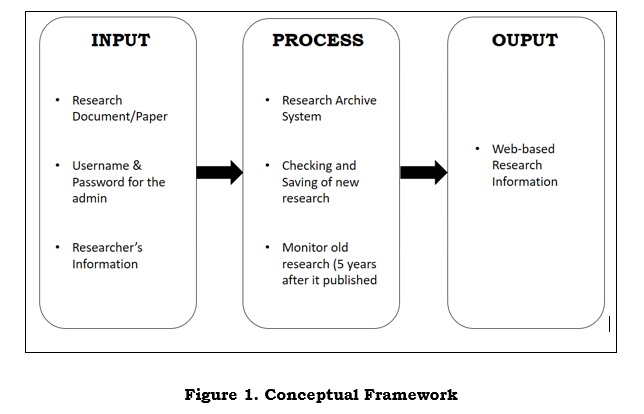



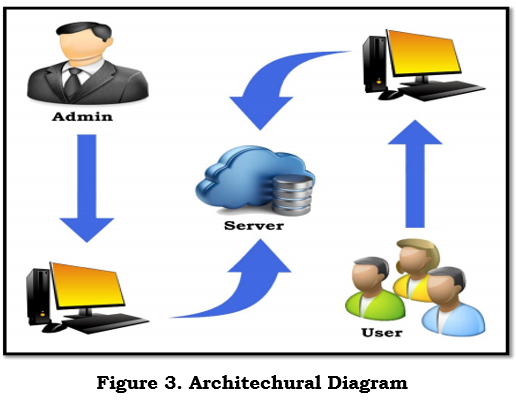
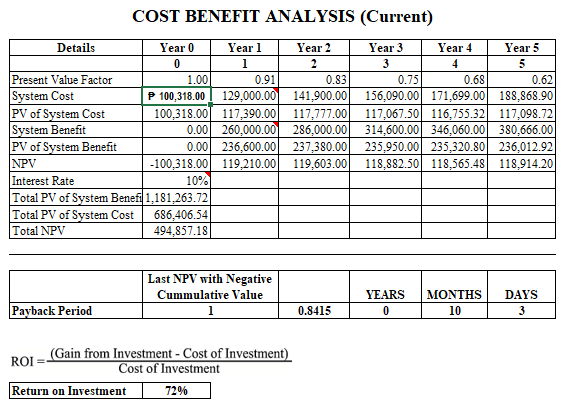
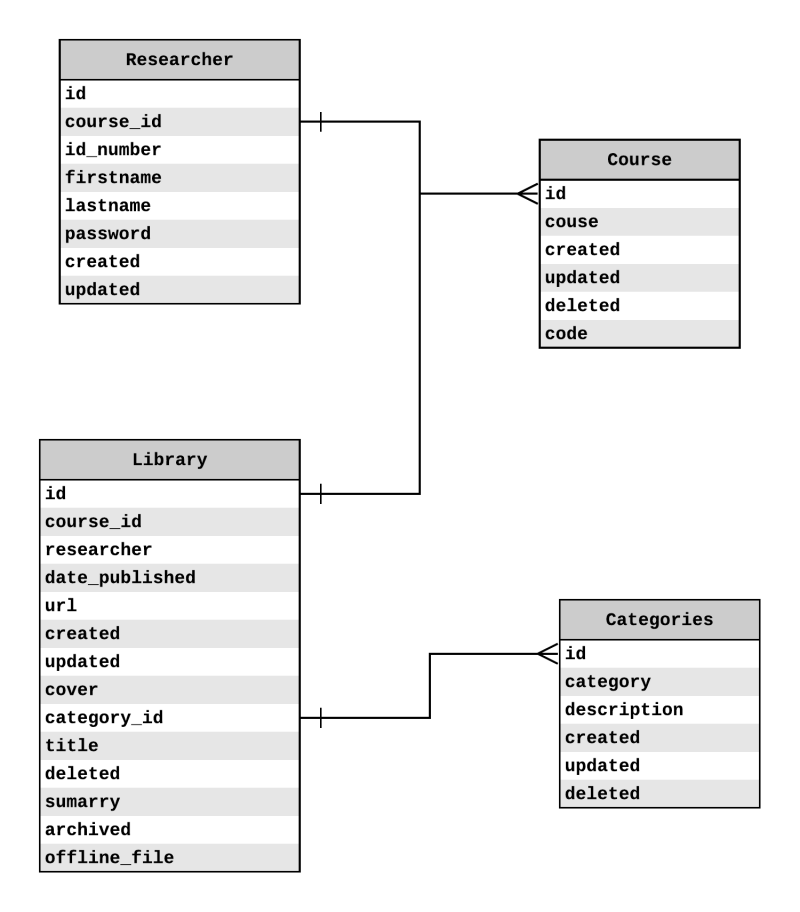

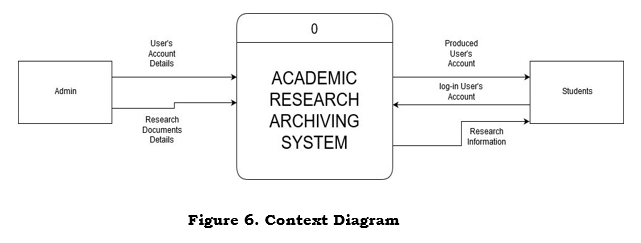
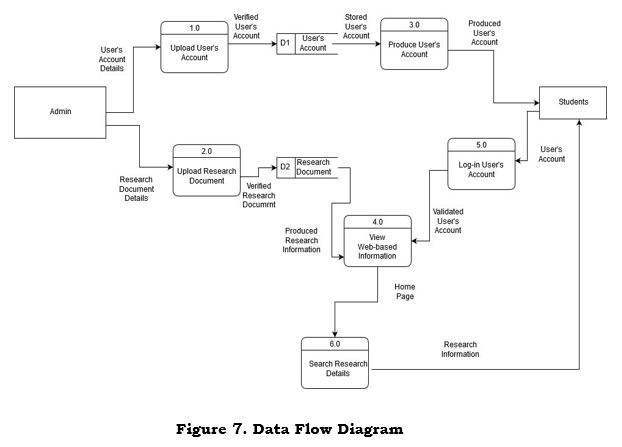
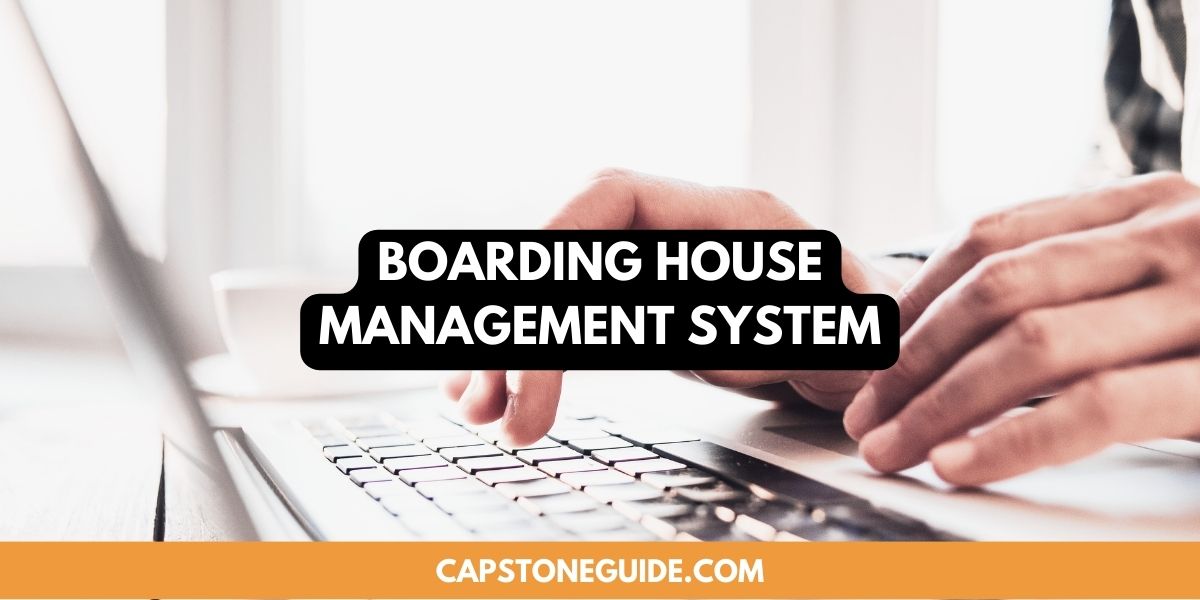


Leave A Comment
You must be logged in to post a comment.